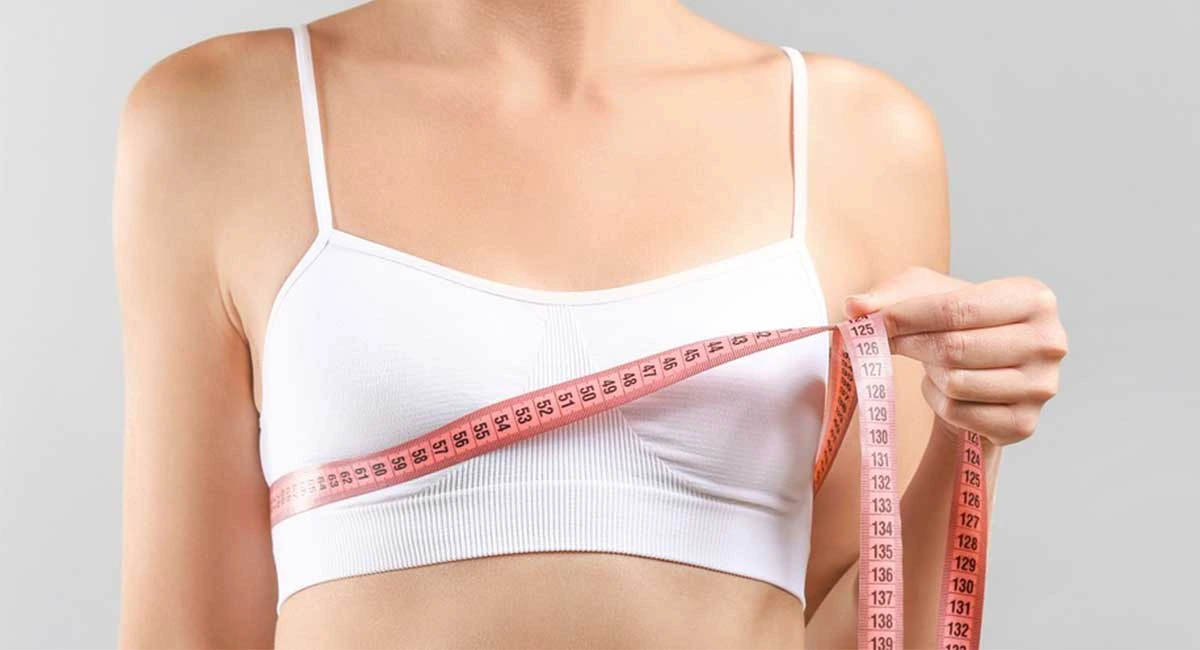
Does Breast Size Change With Weight Loss? What to Expect

Introduction
Many individuals experience changes in breast size, shape, and firmness when losing weight. Breasts typically comprise a combination of fat tissue, connective (ligament) tissue, and glandular tissue. Because the amount of fat varies between individuals, weight loss often reduces breast volume. But extent, appearance changes, and recovery potential depend on unique biology and lifestyle factors.
This article unpacks the science of breast changes during weight loss, explores key influencing factors, and provides strategies to support breast health, shape, and confidence post‑weight loss.
How Weight Loss Affects Breast Size
Composition Matters: Fat vs Glandular Tissue
Breasts contain varying amounts of fatty and glandular tissue depending on genetics, age, and hormonal influences
. Fat tissue is more responsive to calorie deficits, so individuals with higher breast fat percentages often notice more volume loss during weight loss.
Quantitative Impact of Weight Loss
A 2024 study showed a 20% decrease in BMI reduced breast volume by approximately 25%.
Another older analysis found mild decreases in breast cross-sectional area after sustained weight loss.
Overall, these findings support predictable volume loss linked to total weight decline.
Structural Changes: Sagging, Elasticity, and Cooper’s Ligaments
Skin Elasticity and Sag
Rapid or substantial weight loss often leads to skin stretching and reduced elasticity, contributing to breast sag (ptosis). Loss of supportive fat and collagen can make the breast envelope appear deflated or droopy.
Support Systems: Cooper’s Ligaments
These connective tissue bands support breast structure but can stretch over time, particularly with repeated weight fluctuation, multiple pregnancies, or prolonged large breast size. Once stretched, these ligaments may not fully recover, making firmness harder to maintain.
Hormonal and Health Considerations
Role of Estrogen and Menopausal Status
Breast tissue density shifts throughout life. Higher estrogen often increases glandular volume, while menopausal decline reduces firmness and hormone-dependent breast tissue. Weight loss may amplify these effects, particularly later in life.
Rapid Weight Loss from GLP‑1 Medications
Users of GLP‑1 weight loss drugs such as Ozempic, Wegovy, or Mounjaro frequently report changes like breast volume loss, sagging, and deflation,collectively termed “Ozempic breasts” in popular circles. These tend to result from rapid fat loss and altered skin support; some report transient swelling possibly due to hormonal shifts.
What Influences Breast Changes?
Rate of Weight Loss
Slow, steady weight loss (0.5–1 kg/week) is less likely to cause excessive skin sag than rapid losses. This pace gives skin and connective tissues a better chance to adapt .
Genetics and Tissue Distribution
Genetic predisposition affects how and where fat is lost or retained. Women with denser (glandular) breasts may maintain size more during weight loss compared to those with higher fat content .
Age and Skin Quality
Younger individuals often have more skin resilience; older individuals may notice more sag due to reduced collagen and elasticity.
How to Support Breast Appearance During Weight Loss
Wear Supportive Underwear Throughout
A well-fitted bra reduces strain and helps maintain breast position even as volume decreases
Build Chest Muscle Strength
Exercises like chest presses, push-ups, and dumbbell carriers engage pec muscles behind the breast tissue. While exercise will not restore lost volume, improved muscle tone can subtly lift and enhance appearance.
Prioritize Gradual Loss
Avoid crash dieting. Consistent moderate caloric reduction supports better skin adaptation and retention of breast shape.
When Cosmetic Solutions Are Considered
Breast Lift and Reduction After Weight Stabilizes
Breast lift (mastopexy) and reduction surgeries become more predictable once weight has plateaued. Many surgeons advise waiting until after reaching and maintaining stable weight for several months.
Understanding ptosis, or Sagging
Persistent sag may be due to stretched skin, loss of fat padding, or ligament loosening. Not all women require or desire surgery,it depends on personal preference and tissue characteristics.
Real Experiences & Popular Trends
Some individuals report major reductions in breast size after using GLP‑1 drugs and consequent weight loss .
Celebrity experiences have highlighted the rise in demand for breast lift procedures after weight loss, body contouring, or postpartum transformation,underscoring the emotional and aesthetic importance many place on breast appearance .
Frequently Asked Questions (PAA Entities)
What determines how much breast size changes with weight loss?
Breast composition (fat vs glandular ratio), genetics, age, rate of loss, and prior pregnancy history all influence outcomes.
Will breasts always shrink with weight loss?
Often,but less so if glandular tissue predominates. Changes can vary widely among individuals.
Can strength training preserve breast shape?
Yes. Building chest muscles supports underlying tissue and creates firmer contour without changing breast volume .
H3: Is weight loss always better before breast reduction surgery?
Generally yes. Losing weight first helps optimize surgical outcomes, reduces complication risks, and allows for more accurate contour planning .
Conclusion
Weight loss commonly leads to smaller and sometimes sagging breasts, especially when fat tissue comprises a larger proportion of breast volume. But outcomes vary based on genetic composition, skin elasticity, rate of loss, and hormonal factors.
While volume cannot always be preserved, you can support better breast appearance through gradual weight reduction, chest conditioning, and proper support garments. Once weight stabilizes, cosmetic options are available for those seeking restoration or lift.
Your body’s transformation is valid and individual. Embracing change, supporting health, and aligning appearance with personal comfort should guide your approach,not societal pressure or unrealistic ideals.
You may also like
Adding {{itemName}} to cart
Added {{itemName}} to cart




